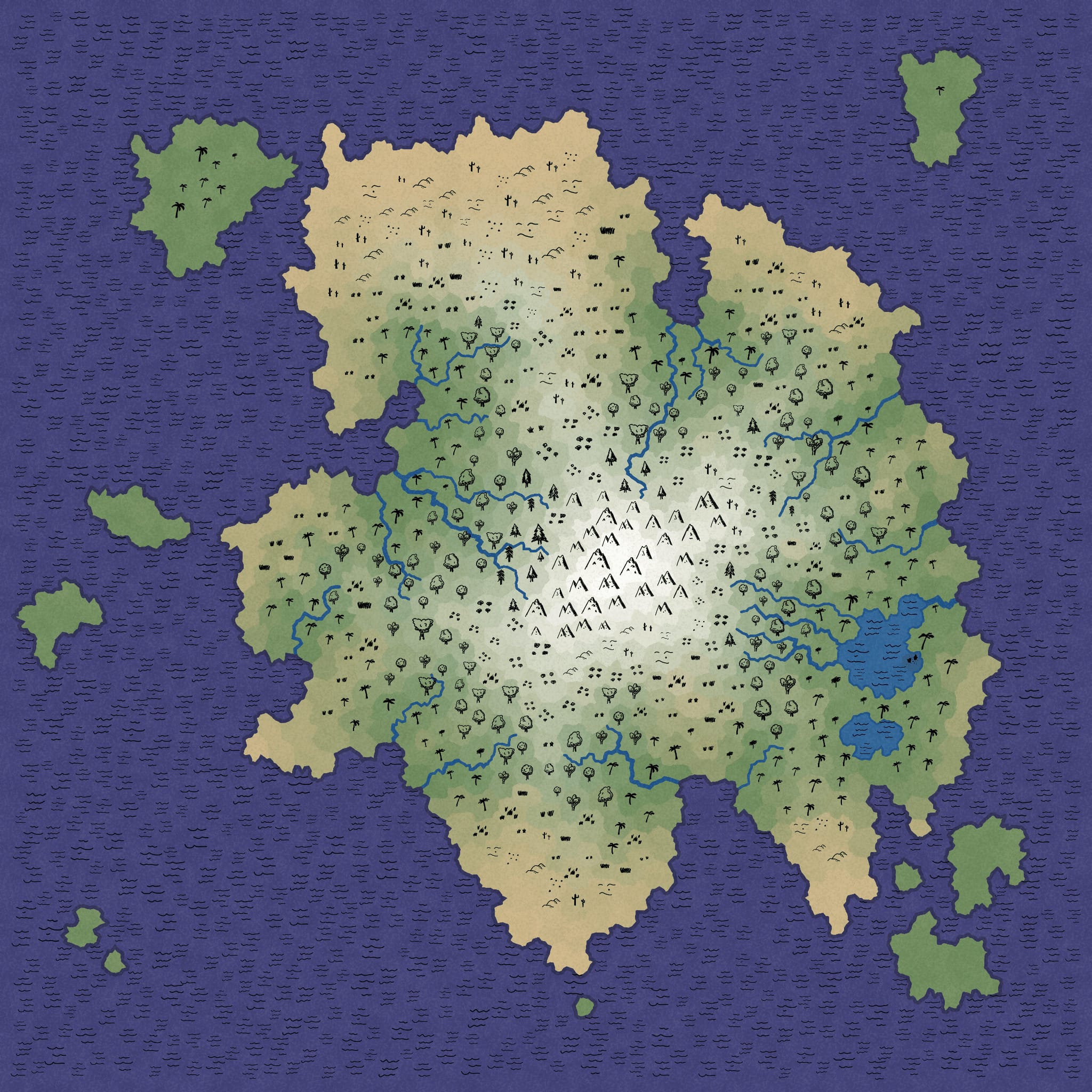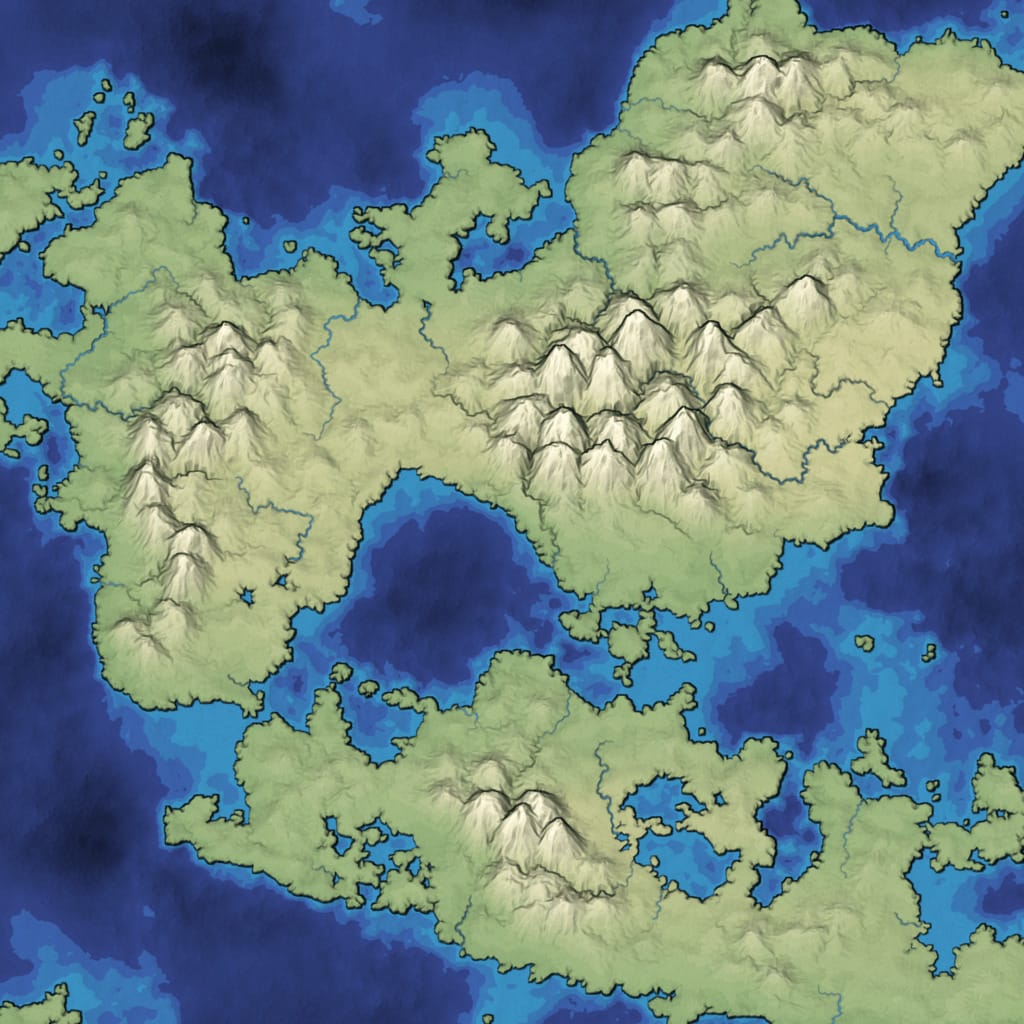The simplest way to explore the maps is to click Random repeatedly. Try the various Island Shape, Point Selection, and View options.
 [3]
[3]Feel free to use these maps for any purpose, including commercial use. This is a map generator I wrote in 2010 for Realm of the Mad God[5]; I’m not working on it anymore, but all the code is available so that you can download and modify it for your own needs. I also have an HTML5 version of mapgen2[6] that has slightly different features.
In a shape number like 85882-8, 85882 chooses the overall island shape and 8 is the random number seed for the details (random points, noisy edges, rivers). You can type in a shape number and press Return to generate that map. The details will vary based on the other options you’ve selected.
 [7]
[7]I wrote an article describing the algorithms, and how you can use all or some of the parts in your own projects. I generate island maps with constant slopes here, but you can use the same ideas for many different styles of maps. Notes:
- Radial, Perlin, Square, Blob are about the island shape.
- Random, Relaxed, Square, Hex are about how the map is divided up into polygons.
- Using 4000 or 8000 points can be slow. I’ve tried 16,000 but Flash gets rather buggy so I didn’t put it in the demo.
- The PNG output is 2048x2048, and draws the selected mode (biomes, polygons, 2D slopes, etc.). It’s slow. I don’t include the noisy bitmap dots so that you can more easily use this in your own projects.
- The byte array output are a 2048x2048 height map, a 2048x2048 moisture map, and a 2048x2048 array of bit flags, which you can decipher by looking at
exportOverrideColorsinmapgen2.as[9]. - The 3D slopes output is slow (I wrote this a long time ago, before GPU acceleration was generally available in browsers).
- There are lots better ways to render the maps, but I haven’t explored them. For this project I was focused on the generation of structured maps.
- I also implemented road and lava algorithms but didn’t include them in this demo.
- The watershed detection algorithm is unifnished. I was hoping it would be useful for assigning territorial control. I will revisit it when I want to procedurally generate towns, cities, nations, histories, etc.
The code is open source, using the MIT license (allows commercial use). I put it up on Github.[10] Sorry, it’s not designed to be easy to reuse. I focused instead on explaining the concepts in the article, so that you can implement the algorithms yourself. I did not implement the Voronoi algorithm; I used an existing library for this.
The original demo I posted in 2010 is here. Changes: I took out roads; I added PNG export; I added byte array output (e.g. height maps); I added control over the number of points; I added control over the distribution of points.